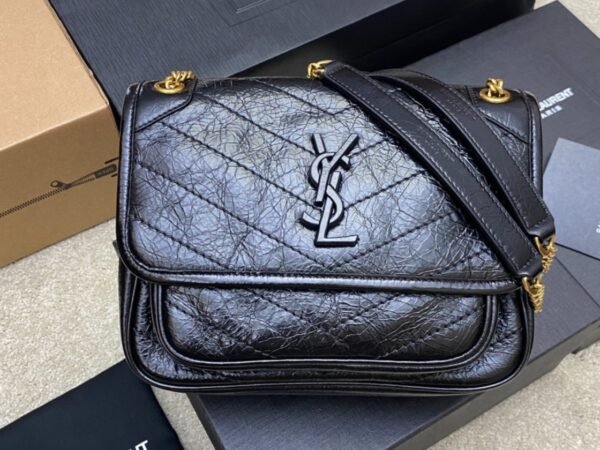Antique jewelry is more than just beautiful pieces to wear. It’s a doorway to history, a reflection of craftsmanship, and sometimes, even a way to make a wise investment. Whether you’re drawn to its charm, seeking to sell a family heirloom, or considering it as part of your investment portfolio, understanding how to navigate the world of antique jewelry is crucial. In this article, we’ll explore how to buy, sell, and invest in antique jewelry like a pro, and share tips that will help you avoid common mistakes.
The Charm and Allure of Antique Jewelry
Before diving into the technicalities of buying and selling, let’s talk about why antique jewelry is so captivating. Each piece has a story to tell, often with intricate designs that reflect the period it was made in. Whether it’s an Art Nouveau brooch from the early 20th century or a Victorian cameo ring, antique jewelry pieces are miniature works of art, each with a unique history. Some items may even be tied to significant moments in history or feature gemstones that are rare and hard to find today.
How Antique Jewelry Connects Us to the Past
The true beauty of antique jewelry lies in its connection to the past. Some pieces are worn by figures of historical importance or are passed down through generations, making them not only a reflection of style but also of family heritage. For many collectors, it’s not just about ownership—it’s about preserving the stories behind these treasures.
How to Identify Genuine Antique Jewelry
Identifying genuine antique jewelry can be tricky with all the fakes and reproductions on the market. But with the proper knowledge, you can spot authentic pieces from a mile away.
Key Indicators of Authentic Antique Jewelry
When it comes to antique jewelry, craftsmanship is often a dead giveaway. Authentic antique jewelry usually features unique, hand-crafted details that are difficult to replicate today. In addition, hallmarks—small stamps or engravings on the piece—can indicate the maker, country of origin, and material. If the hallmark is evident and well-preserved, it’s a good sign that the piece is genuine.
The Importance of Condition
The condition of an antique piece is crucial when assessing its authenticity and value. Over the years, jewelry may have been altered or restored. Authenticity doesn’t mean it has to be in perfect shape—minor imperfections or wear can add to its charm and value. However, if a piece has been poorly repaired or altered beyond recognition, it can reduce its value significantly.
The Best Ways to Sell Antique Jewelry
Selling antique jewelry is an art in itself. Whether you’re looking to part with a family heirloom or downsize your collection, there are strategies to help you get the most out of your piece.
Choosing the Right Selling Platform
You have several options when selling your antique jewelry: local jewelers, antique dealers, online auctions, and auction houses. Local jewelers might offer a quick sale but may not provide the highest price. If you want to reach a larger audience, platforms like eBay or Etsy are great for online sales. These platforms allow you to target niche buyers specializing in specific eras or styles.
For high-value pieces, consider working with a reputable auction house. Auction houses like Sotheby’s or Christie’s specialize in high-end antique jewelry and have access to a global network of buyers. The right auction house can secure competitive bids and even attract well-known collectors eager to add rare pieces to their collections.
How to Prepare Your Jewelry for Sale
Before you list your piece for sale, take the time to clean it (without damaging it), get it appraised, and have it professionally photographed. Clear, detailed photos are essential, especially if you’re selling online. Highlight the hallmarks, unique design features, and condition issues to provide potential buyers with all the necessary information. If you’re selling through a dealer, appraising your jewelry beforehand will ensure you’re not underselling it.
Antique Jewelry as an Investment Opportunity
Antique jewelry isn’t just about owning beautiful objects; it can also be a smart financial move. Like art or real estate, rare and high-quality jewelry can appreciate over time. However, certain factors should be considered before making a purchase or investment.
Why Antique Jewelry Is a Timeless Investment
One key reason antique jewelry is a solid investment is its rarity. Well-crafted pieces become more challenging to find as time passes, especially those made with rare gemstones or from famous designers. Pieces from iconic eras, such as Art Deco or Edwardian, can increase in value due to their distinctive styles and scarcity. Jewelry featuring natural gemstones like diamonds, sapphires, or emeralds is also highly desirable and retains its value.
What Drives the Value of Antique Jewelry?
Several factors contribute to the value of antique jewelry, including rarity, condition, and provenance (the history or background of the piece). A piece with a famous designer or a royal connection can command an extremely high price at auction. Additionally, the demand for certain types of jewelry can fluctuate depending on fashion trends, so understanding market trends is essential if you want to make a profitable investment.
The Risk of Antique Jewelry Investment
Just like with any investment, there are risks involved in purchasing antique jewelry. The market can be volatile, and pieces may not appreciate as expected. Moreover, finding a genuine antique piece can be challenging, and forgeries or misrepresentations are common. That’s why it’s crucial to do thorough research and work with trusted dealers or auction houses when investing in antique jewelry.
The Art of Preserving Antique Jewelry
Once you’ve invested in or inherited antique jewelry, preserving its condition is vital to maintaining its value. Here are some tips on how to care for your treasures.
Proper Storage and Cleaning
To keep your antique jewelry in top shape, store it properly. Avoid tossing pieces into a drawer or leaving them exposed to sunlight. Store your items in soft pouches or velvet-lined boxes to prevent scratching. Some metals, like silver, tarnish over time, so keeping them in a cool, dry place is best.
Avoid harsh chemicals or cleaning agents when cleaning antique jewelry, as these can damage delicate materials or stones. Use a gentle cloth to wipe away dirt or oils, and consider professional cleaning services if the piece requires more profound attention.
Regular Maintenance and Repairs
Regular jewelry inspections can prevent minor issues from turning into major repairs. If you notice a loose gemstone or a weak clasp, take the piece to a professional jeweler specializing in antique pieces. Restoration should only be done by experts who understand the piece’s historical value and can preserve its integrity while fixing any damage.
Where to Find Reliable Antique Jewelry Buyers
When it comes time to sell your antique jewelry, choosing the right buyer is crucial. You want someone who understands the value of your piece and is trustworthy.
How to Vet Buyers for Trustworthiness
Look for antique jewelry buyers who are members of reputable trade organizations, like the National Association of Jewelry Appraisers or Antiques Roadshow-certified experts. A trustworthy buyer should be transparent about the purchase process, provide a written offer, and allow you to ask questions about their experience and background. If selling online, check for reviews and ratings from previous sellers to gauge the buyer’s reliability.
Conclusion: Antique Jewelry—A Treasure of the Past with Value for the Future
Antique jewelry offers a unique mix of history, beauty, and value. Antique jewelry holds a certain charm, whether you’re buying for the aesthetic, looking to sell a family heirloom, or investing in a future asset. By understanding how to identify authentic pieces, sell wisely, and maintain their value, you’ll enjoy this fascinating world to the fullest.
So, whether you’re picking up a vintage necklace at an auction or holding on to an old family bracelet, remember: each piece is more than just a jewelry item—it’s a story, a treasure, and sometimes, a smart financial move for the future.
Do Read: The Smart Way to Shop for an Engagement Ring Online













